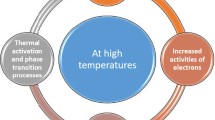Abstract
In order to determine the influence of internal interfaces on the material’s global mechanical behavior, the strength of single interfaces is of great interest. The experimental framework presented here enables quantitative measurements of the initiation and propagation of interfacial cracks on the microscale. Cantilever beams are fabricated by focused ion beam milling out of a bulk sample, with an interface of interest placed close to the fixed end of the cantilever. Additionally, a U-notch is fabricated at the location of the interface to serve as a stress concentrator for the initiation of the crack. The cantilevers are then mechanically deflected using a nanoindentation system for high resolution load-displacement measurements. In order to determine the onset and propagation of damage, the stiffness of the cantilevers is recorded by partial unloads during the test as well as by making use of a continuous stiffness technique. A finite element model is used to normalize the load and stiffness in order to establish the framework for comparisons between different interfaces.











Similar content being viewed by others
References
Watanabe T, Tsurekawa S (1999) The control of brittleness and development of desirable mechanical properties in polycrystalline systems by grain boundary engineering. Acta Mater 47:4171–4185
Madhukar MS, Drzal LT (1991) Fiber-matrix adhesion and its effect on composite mechanical properties: I. Inplane and interlaminar shear behavior of graphite/epoxy composites. J Compos Mater 25:932–957
Uchic MD, Dimiduk DM, Florando JN, Nix WD (2004) Sample dimensions influence strength and crystal plasticity. Science 305:986–989
LaVan DA, Sharpe WN (1999) Tensile testing of microsamples. Exp Mech 39:210–216
Kiener D, Grosinger W, Dehm G, Pippan R (2008) A further step towards an understanding of size-dependent crystal plasticity: In situ tension experiments of miniaturized single-crystal copper samples. Acta Mater 56:580–592
Florando JN, Nix WD (2005) A microbeam bending method for studying stress-strain relations for metal thin films on silicon substrates. J Mech Phys Solids 53:619–638
Halford TP, Takashima K, Higo Y, Bowen P (2005) Fracture test of microsized TiAl specimens. Fatigue Fract Eng Mater Struct 28:695–701
Nishida M, Matsuda M, Shimada Y, Takashima K, Ishikawa K, Aoki K (2009) Microstructural and mechanical characterizations of rapidly solidified Nb-TiNi hydrogen permeation alloy. J Phys Conf Ser 144:012106
Matoy K, Schönherr H, Detzel T, Schöberl T, Pippan R, Motz C, Dehm G (2009) A comparative micro-cantilever study of the mechanical behavior of silicon based passivation films. Thin Solid Films 518:247–256
Armstrong DEJ, Rogers ME, Roberts SG (2009) Micromechanical testing of stress corrosion cracking of individual grain boundaries. Scr Mater 61:741–743
Standard test method for measurement of fracture toughness, ASTM E1820 (2008) Annual book of ASTM standards, vol 03.01, pp 1070–1117
Vasudevan AK, Doherty RD (1987) Grain boundary ductile fracture in precipitation hardened aluminum alloys. Acta Metallurg 35:1193–1219
Kalyanam S, Beaudoin AJ, Dodds RH, Barlat F (2009) Delamination cracking in advanced aluminum-lithium alloys—experimental and computational studies. Eng Fract Mech 76:2174–2191
Ren L, Bahr DF, Hoagland RG (2000) Multiscale phenomena in materials—experiments and modeling, MRS proceedings. In: Lassila DH, Robertson IM, Phillips R, Devincre B (eds) Mater Res Soc Symp Proc, Warrendale, PA, vol 578, pp 411–416
Unocic KA, Mills MJ, Daehn GS (2010) Effect of gallium focussed ion beam milling on preparation of aluminum thin foils. J Microsc 240:227–238. doi:10.1111/j.1365-2818.2010.03401.x
Lynch SP (1989) Mechanisms of intergranular fracture. Mater Sci Forum 46:1–24
Oliver WC, Pharr GM (1992) An improved technique for determining hardness and elastic modulus using load and displacement sensing indentation experiments. J Mater Res 7:1564–1583
Li JCM, Chou YT (1970) The role of dislocations in the flow stress grain size relationships. Metall Trans 1:1145– 1159
Author information
Authors and Affiliations
Corresponding author
Rights and permissions
About this article
Cite this article
Kupka, D., Lilleodden, E.T. Mechanical Testing of Solid–Solid Interfaces at the Microscale. Exp Mech 52, 649–658 (2012). https://doi.org/10.1007/s11340-011-9530-z
Received:
Accepted:
Published:
Issue Date:
DOI: https://doi.org/10.1007/s11340-011-9530-z




